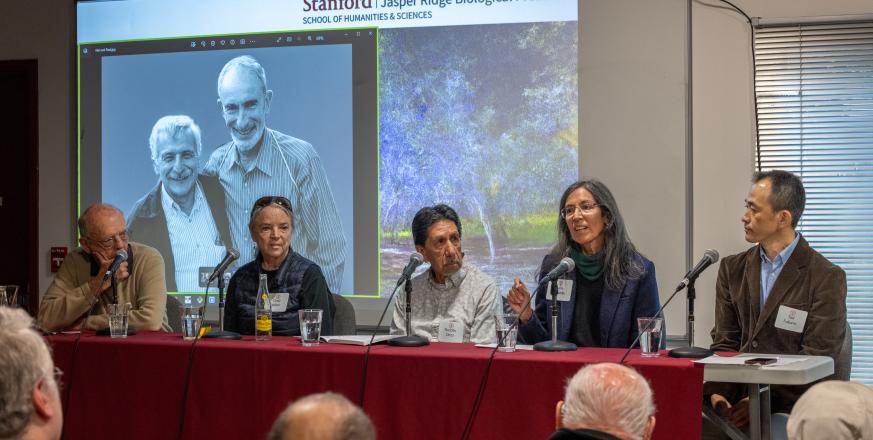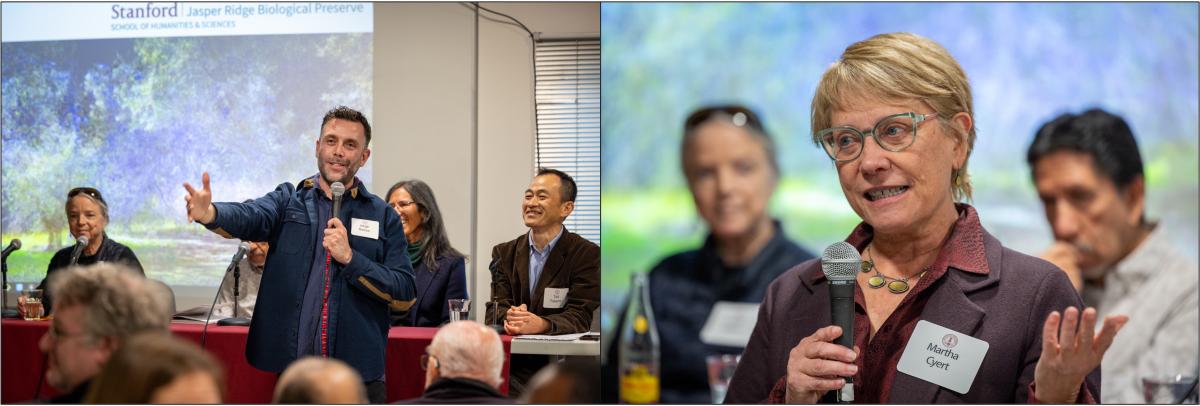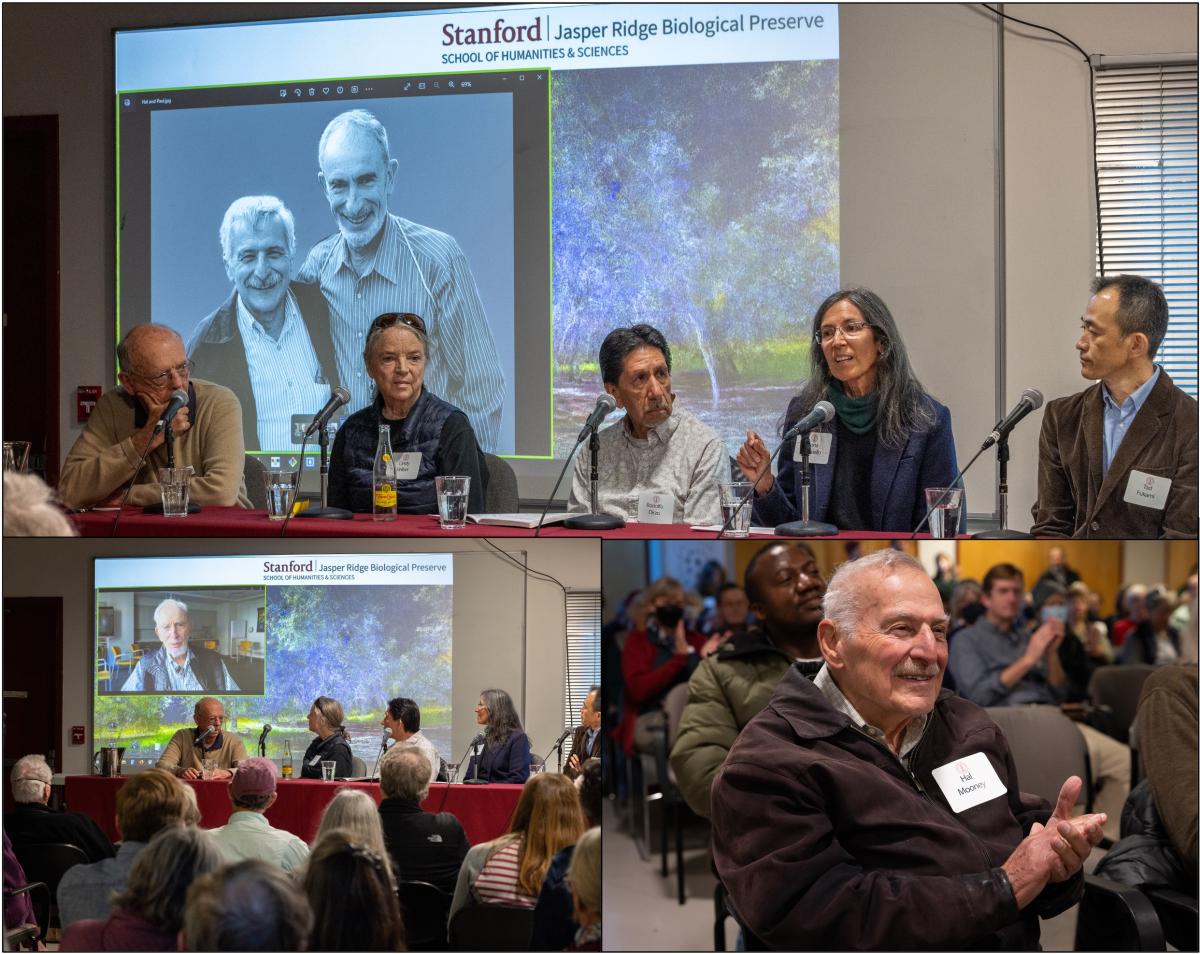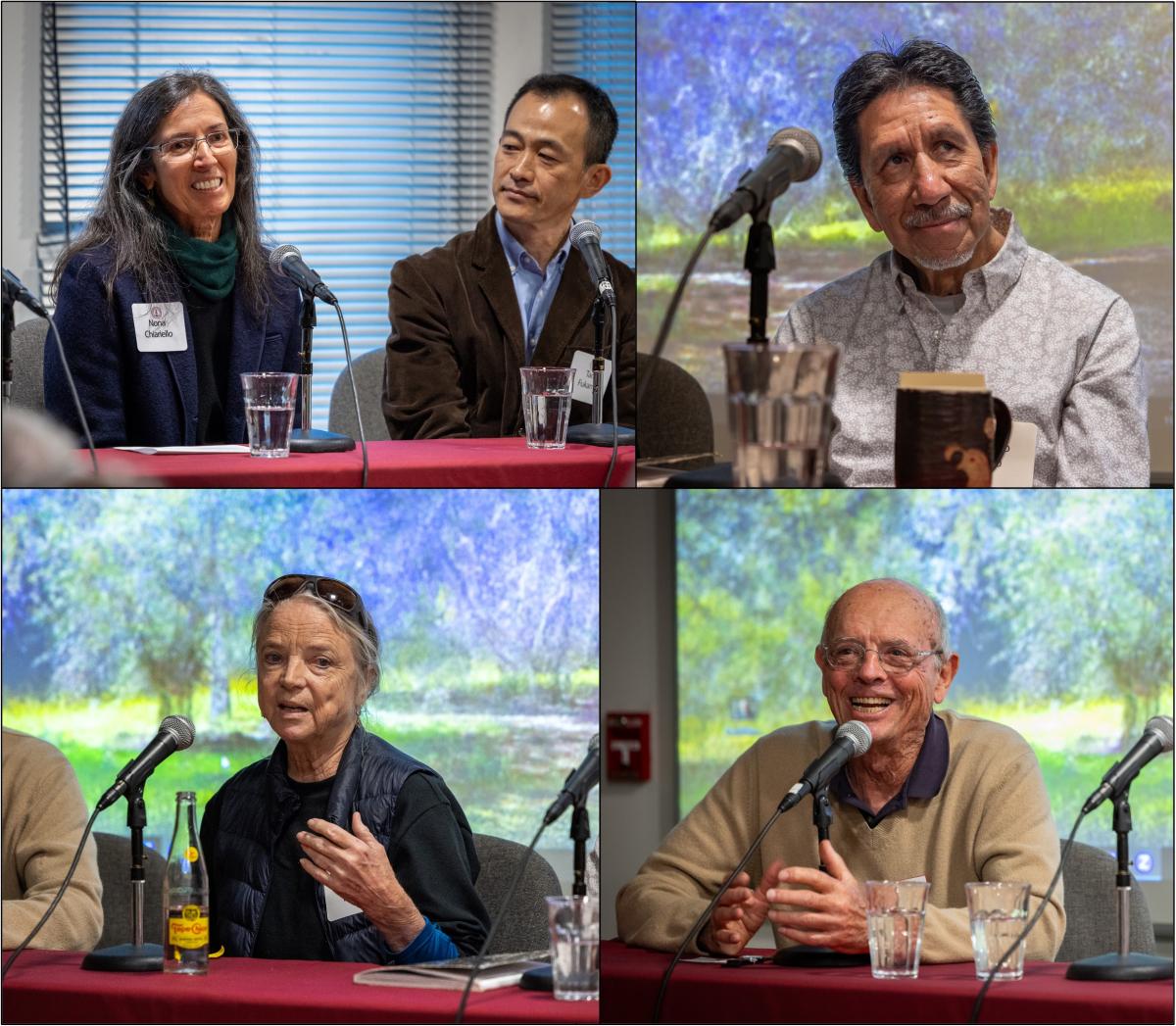Celebrating Jasper Ridge Biological Preserve’s 50th anniversary

Jasper Ridge was formally designated by the university as a biological preserve in 1973. To celebrate its 50th anniversary, a series of events are being held this academic year.
The first of these, hosted at the preserve on November 30, 2023, turned out to be quite a memorable day. More than 120 participants enjoyed a light lunch outside in the picnic tables under the magnificent and senescing valley oaks. They shared memories and enjoyed catching up with old friends and making new ones. Right after lunch, we proceeded to meet in the main classroom in the Sun Field Station for a panel discussion and conversation on the history and impact of Jasper Ridge.

Jorge Ramos and Martha Cyert opening the program of Jasper Ridge's 50th anniversary celebration. Photo by LiPo Ching.
The program started with Executive Director Jorge Ramos giving a welcome remark, followed by Professor Martha Cyert, the Biology Department chair, commenting on the significance of the preserve for the Department’s research and teaching missions and more broadly for the Stanford community.
Faculty Director Tadashi Fukami then introduced the four panelists, including Nona Chiariello (Staff Scientist at Jasper Ridge), Rodolfo Dirzo (Professor of Biology and Earth System Science), Cindy Wilber (former Education Coordinator at Jasper Ridge), and Bill Gomez (Jasper Ridge docent), who were invited to speak about their thoughts on the past, present, and future of the preserve.
In her speech, Nona focused on the contributions that Paul Ehrlich and Hal Mooney made as two of the pioneers who catalyzed the forming of the preserve and conducted some of the early flagship research at Jasper Ridge. The research Nona mentioned included Paul’s Bay checkerspot butterfly (Euphydryas editha bayensis) work and Hal’s plant ecophysiological work, which led to the development of some major concepts in biology, such as metapopulation, coevolution, and carbon balance.

Top Frame: Nona introducing the work by Paul Ehrlich and Hal Mooney. Bottom right: Paul Ehrlich sharing the significance of Jasper Ridge via video. Bottom right: Hal Mooney. Photos by LiPo Ching
Although, for health reasons, Paul himself could not attend in person, he addressed the audience through a pre-recorded video message, shown right after Nona’s remarks. He gave a personal account of how he began his butterfly research, and explained why Jasper Ridge was “the most important research facility on Stanford campus.” Hal also greeted via a pre-recorded video, highlighting the fact that Jasper Ridge is “just a bicycle trip away” from the main campus, giving us an unusual opportunity for research and teaching that most other universities in the country do not have.
Rodolfo then followed, reflecting on the early research at Jasper Ridge that inspired him while he was still a student in Mexico, including William Dement and Hal Mooney’s work on bird–toyon (Heteromeles arbutifolia) interactions, Bruce Bartholomew’s study of mammal–chaparral shrub interactions, and Paul Ehrlich and Peter Raven’s synthesis on coevolution. Rodolfo also emphasized Jasper Ridge’s long-lasting dedication to outreach. Looking to the future, he pointed out Anthropocene ecology and interactions with local Indigenous tribes as important topics.

Clockwise: Panelists Nona Chiariello and Tad Fukami, Rodolfo Dirzo, Cindy Wilber and Bill Gomez. Photos by LiPo Ching
Cindy expanded on the outreach activities that Rodolfo touched on, mentioning the many programs hosted at the preserve over the past few decades, including the Redwood Environmental Academy of Leadership (REAL) program, the Stanford SEEDS chapter and the Stanford Teacher Education Program (STEP). She also paid tribute to a few notable individuals, including Irene Brown, Leonard Robinson, and Herb Dengler.
Finally, Bill shared his stories of getting involved in research and education as a docent, and how enriching it has been to him. He also commented on the future of the preserve, predicting that areas of focus that will be important in the future include continued long-term monitoring of ants, birds, bats, and large mammals and enhanced emphasis on restoration ecology and traditional ecological knowledge.
The program ended with a lively question-and-answer and open-mic session, where the audience interacted with the panelists to look back on the past 50 years and look forward to the next 50 years together.
All in all, this event made us all remember how precious Jasper Ridge has been for research, learning, and environmental stewardship. So much was accomplished over the past half-century thanks to the dedicated group of students, researchers, and docents learning together as a community. There will be two more events to celebrate the 50th anniversary, to be held on April 15 and June 6 of 2024. Details will be announced soon.
The video recording of the November 30 event can be watched here.
To read more about the April 2024 50th year anniversary research symosium visit this link.
------------------------------------
Bonus image: The event was attended by many across generations. Shown in this photo are four professors, who have each used Jasper Ridge for their research and teaching: Barnabas Daru, Erin Mordecai, Chris Field, and Hal Mooney (clockwise). They have been on the Stanford faculty since 2023, 2015, 1986, and 1968, respectively. Photo by LiPo Ching.



